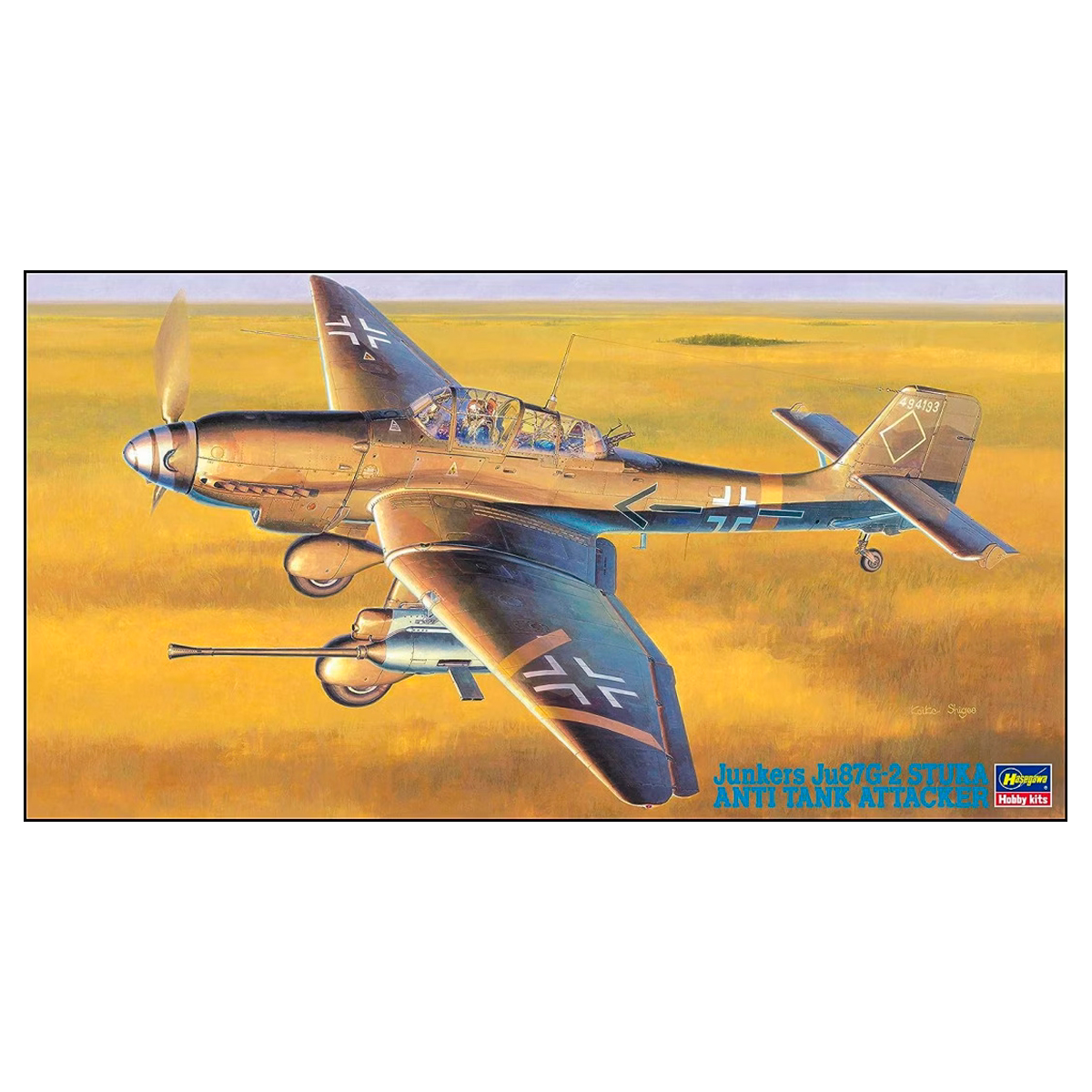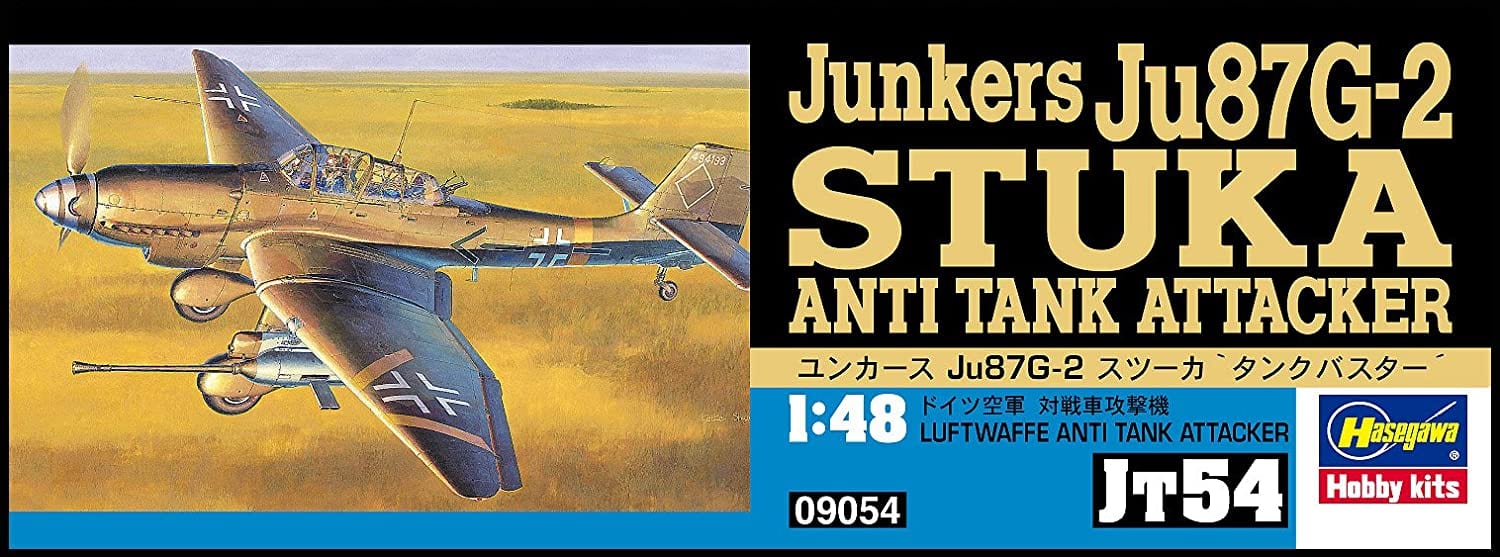1/48 Ju-87G-2 Stuka
23,95€
Hay existencias

*Please check our Privacy Policies to see how to we use your personal data.
*Por favor revisa nuestra Política de Privacidad para ver como tratamos tus datos personales
With the G variant, the aging airframe of the Ju 87 found new life as an anti-tank aircraft.
This was the final operational version of the Stuka, and was deployed on the Eastern Front.
The reverse in German military fortunes after 1943 and the appearance of huge numbers of well-armoured Soviet tanks caused Junkers to adapt the existing design to combat this new threat.
The Hs 129B had proved a potent ground attack weapon, but its large fuel tanks made it vulnerable to enemy fire, prompting the RLM to say «that in the shortest possible time a replacement of the Hs 129 type must take place.»
With Soviet tanks the priority targets, the development of a further variant as a successor to the Ju 87D began in November 1942. On 3 November, Erhard Milch raised the question of replacing the Ju 87, or redesigning it altogether. It was decided to keep the design as it was, but to upgrade the powerplant to a Jumo 211J, and add two 30 mm (1.18 in) cannon.
The variant was also designed to carry a 1,000 kg (2,200 lb) free-fall bomb load. Furthermore, the armoured protection of the Ilyushin Il-2 Sturmovik was copied, to protect the crew from ground fire now that the Ju 87 would be required to conduct low level attacks.
Skill Level 3
113 pieces
Con la variante G, el viejo fuselaje del Ju 87 encontró nueva vida como un avión antitanque.
Esta fue la versión operativa final del Stuka, y se desplegó en el Frente Oriental.
El revés en las fortunas militares alemanas después de 1943 y la aparición de un gran número de tanques soviéticos bien blindados hicieron que Junkers adaptara el diseño existente para combatir esta nueva amenaza.
El Hs 129B había demostrado ser un arma de ataque terrestre potente, pero sus grandes tanques de combustible lo hacían vulnerable al fuego enemigo, lo que provocó que el RLM dijera «que en el menor tiempo posible debe tener lugar un reemplazo del tipo Hs 129».
Con los tanques soviéticos como objetivos prioritarios, el desarrollo de una variante adicional como sucesor del Ju 87D comenzó en noviembre de 1942. El 3 de noviembre, Erhard Milch planteó la cuestión de reemplazar el Ju 87 o rediseñarlo por completo. Se decidió mantener el diseño como estaba, pero actualizar el motor a un Jumo 211J y agregar dos cañones de 30 mm (1.18 pulgadas).
La variante también fue diseñada para transportar una carga de bomba de caída libre de 1,000 kg (2,200 lb). Además, se copió la protección blindada del Ilyushin Il-2 Sturmovik, para proteger a la tripulación del fuego terrestre ahora que se necesitaría el Ju 87 para realizar ataques de bajo nivel.
Habilidad Nivel 3
113 piezas







 Solicitud de ficha producto tipo SDS / Seguridad de producto
Solicitud de ficha producto tipo SDS / Seguridad de producto